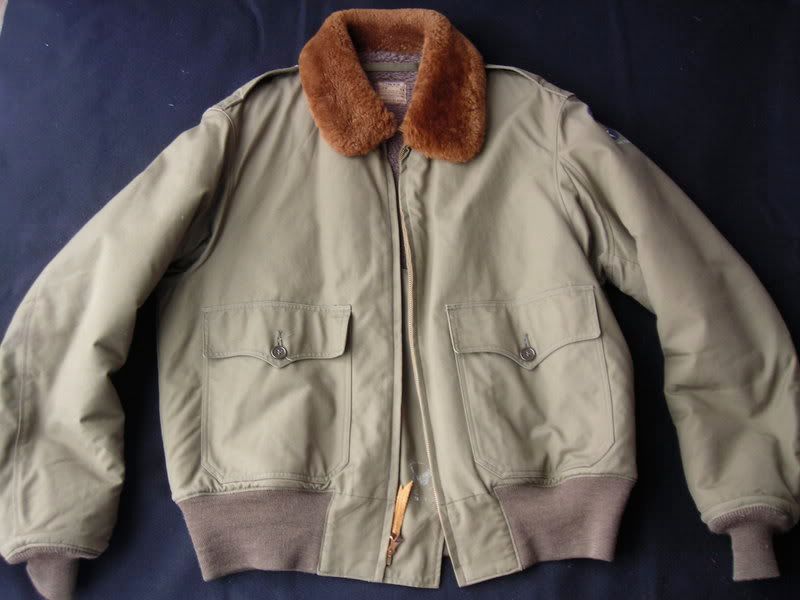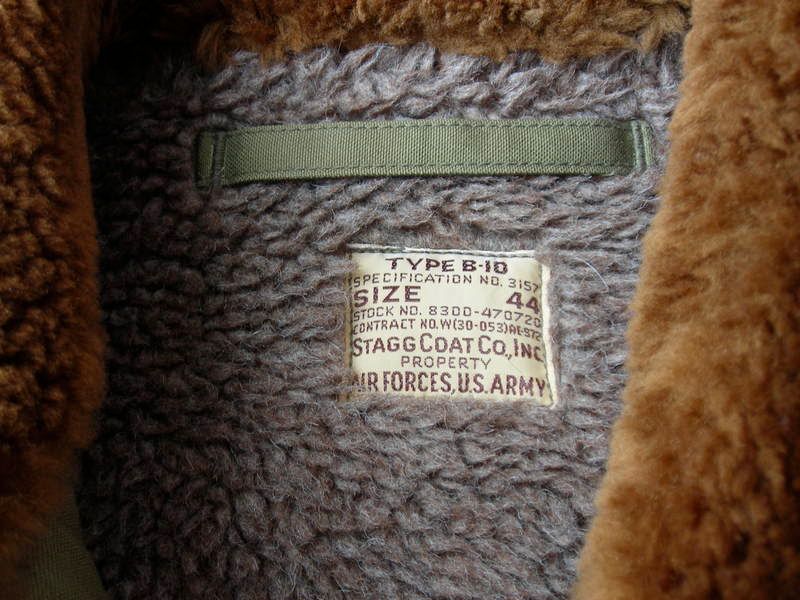Here's a Promotional Aviator shot from early in the war:

Unfortuntely, by 1943, the reality of a global war was making itself felt, and the fact was that the A-2, though lovely, was, as a piece of flight kit, not all that useful. So General Arnold ordered an improved jacket in July 1943, and was in service by the late spring 44. It was a alpaca fur lined cloth jacket, much more flexible and warm than the previous unlined leather garment that had attained iconic fame. You could argue that the B-10 is just as cool, but it wasn't first. Here's a great photo of Don Gentile, one of the leading aces of the 8th Air Force in England, looking very cool in his B-10 and flight gear:

The B-10 had a short operational lifespan. It was quickly eclipsed by the B-15 flight jacket, which is a direct ancestor to the modern MA-1 flight jacket that is so iconic from the cold war.
The B-10 that I have is a reproduction made by a company called Real McCoy's Japan. It is a replica of a specific contract, made by Stagg Coat Co. There is a Real McCoy's Japan these days, but the company that exists today is not the company which made my jacket some years ago. It's all very confusing, so I'll just post the pictures, which are not.







No comments:
Post a Comment